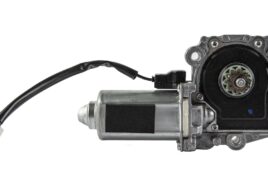In the future, fleets of drones may carry packages overhead while autonomous robots as small as a dog or as large as a box truck may roll along our sidewalks and streets. A team of faculty from Carnegie Mellon University’s College of Engineering, School of Computer Scienceand Heinz College of Information Systems and Public Policy received funding from the U.S. Department of Energy (DOE) to help understand the energy implications of this vision. The DOE provided $2.5 million to fund this and another project that will improve energy efficiency and increase mobility intelligence.
The goal in this particular project is to create a comprehensive analysis of how drones, autonomous vehicles, robots and intelligently managed infrastructure can improve the first and last mile of goods transportation — the most cost- and energy-intensive portions of delivery. The team is led by Associate Professor Costa Samaras and Assistant Professor Sean Qian of the Department of Civil and Environmental Engineering, and Senior Systems Scientist Sebastian Scherer of the School of Computer Science.
Parallel advances in artificial intelligence, drones and robotics and vehicle electrification have opened a window into a new future for the transportation of goods. The shipping industry, still dominated by diesel vehicles, could see major energy reductions through intelligent integration of these technologies.
“What we set out to do is measure and understand how these delivery networks might work,” Samaras said. “Our question was ‘can we reduce the energy required to deliver these goods in this last mile by 20 percent or more?’ We think we can.”
Many of the technologies in question are being tested by companies across the country. A company in Washington, D.C., is experimenting with using small, wheeled robots that can travel on sidewalks or streets for food delivery — an option also being explored by companies like Uber and Lyft with autonomous passenger vehicles. And Amazon has been testing a drone delivery fleet for several years.
Organizations such as Amazon that hold a major stake in the future of delivery systems will provide valuable input toward the project. Amazon, Pittsburgh Region Clean Cities and the City of Pittsburgh will periodically interact with the team to ensure that their experimental design closely aligns with the challenges of real-world deployment.
The city, while not involved in the delivery industry itself, is the primary interested party in related aspects of the network: infrastructure, safety and sustainability. This composes the last research focus for the team. Their empirical testing and modeling will not only encompass the various vehicles through which deliveries will one day reach us, but also the system they will have to navigate to get there. They will look at how changes in timing, weight, routing and physical infrastructure resources could best work in conjunction with delivery vehicles within what the team has termed the “intelligent delivery zone.”
“It’s like an airport gate,” Samaras said. “We’re thinking about how we can allocate the limited space in an urban delivery zone to make traffic, energy and congestion least intensive.”
Ultimately, the team will publish its results and share them with the Department of Energy and the general public. As a leader in the field of autonomy, Carnegie Mellon is helping analyze and guide the way these emerging technologies will create an improved, more energy-efficient future. With a team of experts gathered from across many schools and disciplines, Samaras said he is confident the project will help light the way ahead for stakeholders in industry, research and government.
“There are companies that are testing and fielding these types of systems right now,” Samaras said. “Full deployment isn’t right around the corner, but it’s not too far away.”
Filed Under: AI • machine learning, Automotive, Product design




